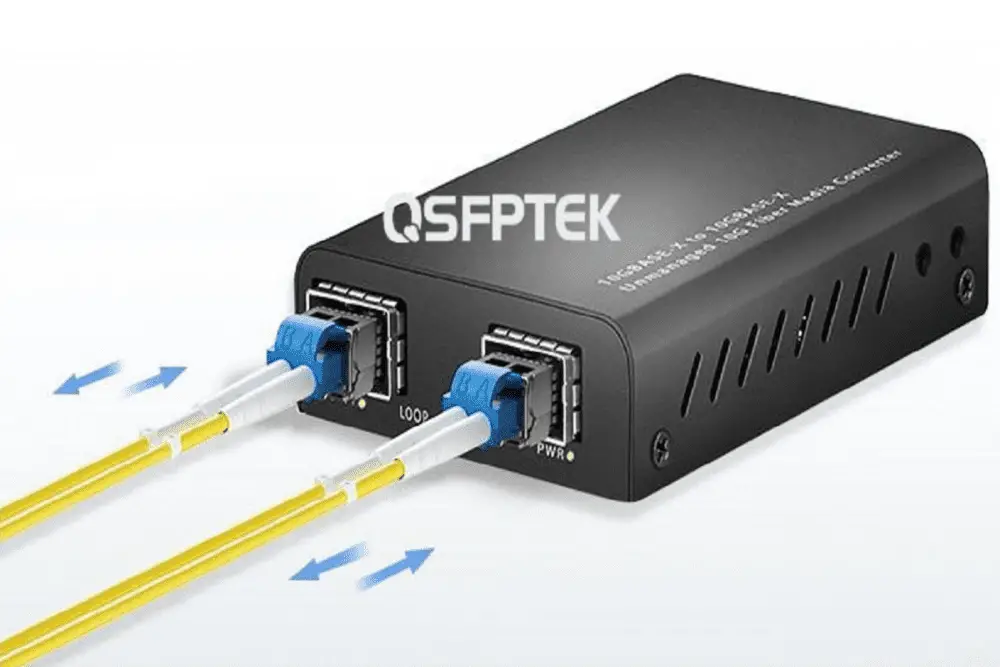To ensure full compatibility with other manufacturers’ network cards, repeaters, hubs, switches and other network equipment, media converters must strictly comply with 10Base-T, 100base TX, 100base FX, IEEE802 3 and IEEE802 3U and other requirements Ethernet. standards In addition, EMC anti-electromagnetic radiation shall comply with FCC Part 15. Nowadays, as the major domestic operators are vigorously building community networks, campus networks and enterprise networks, the consumption of media converters is also increasing to better meet the access construction needs. networks According to different classification standards, there are various types of media converters on the market.
Classification by fiber type
Multimode Media Converter and Single Mode Media Converter
It can be divided into multimode media converters and singlemode media converters. Due to the different optical fibers used, the transmission distance of the media converter is also different. The transmission distance of the multimode media converter is generally between 2 km and 5 km, while the coverage of the single mode media converter can range from 20 km to 120 km. It should be noted that due to different transmission distances, the transmission power, receiver sensitivity, and media converter wavelength will be different. For example, the transmit power of 5km media converter is generally between -20~-14dB, the receiver sensitivity is less than -30dB, and the wavelength is 1310nm. However, the transmit power of the 120 km media converter is mainly between -3 and 0 dB, the receiver sensitivity is less than -36 dB, and the wavelength is 1550 nm.
Classification by Structure
Desktop Media Converter and Rack Media Converters
According to different structures, media converters can be divided into desktop (stand-alone) media converters and rack media converters. The desktop media converter is suitable for a single user (and built-in power transceiver and external power transceiver), such as a single-switch uplink in the hallway. Rack type media converters are suitable for the convergence of multiple users. For example, the central switch room in the farm must serve the uplink of all switches in the farm. The use of the rack is convenient to realize the unified management and unified power supply of all modular media converters. Confederation Communication’s Media Converter Rack is a 16-slot product, meaning a maximum of 16 modular media converters can be inserted into a rack.
Classified by network management function
Managed Media Converter and Unmanaged Media Converter
Depending on whether you have a network management role, media converters can be divided into managed media converters and unmanaged media converters. With the development of the network towards the direction of operation and management, most operators hope that all the equipment in their network can be managed remotely. Media converters such as switches and routers are also gradually developing in this direction. The unmanaged media converter supports plug and play, and the working mode of the electrical interface is set through the hardware dial switch. The managed type media converter supports carrier-level network management.
Classification by Mode of Work
Full duplex media converter and half duplex media converter
According to different working modes, media converters can be divided into full-duplex media converters and half-duplex media converters. Full duplex means that when data transmission and reception are diverted and transmitted by two different transmission lines, both sides of the communication can transmit and receive at the same time. This transmission mode is full-duplex. In full duplex mode, the transmitter and receiver are configured at each end of the communication system, so data can be controlled to be transmitted in both directions at the same time. Full duplex mode does not require address change, so there is no time delay caused by the change operation. Half duplex mode refers to the use of the same transmission line for both reception and transmission. Although data can be transmitted in two directions, both sides of the communication cannot send and receive data at the same time. Such a transmission mode is the half-duplex system. When the half-duplex mode is adopted, the transmitter and receiver at each end of the communication system are transferred to the communication line through the receive/send switch to change the direction. Therefore, a time delay will be generated.
Conclusion
This document comprehensively introduces various types of media converters according to different fiber types, structures, network management functions, and working modes. QSFPTEK offers various highly reliable and stable network converters at low prices, such as 1G copper to fiber media converter, 10G copper to fiber media converter, 10G fiber to fiber media converter, and of PoE media. Welcome to inquire via [email protected].

Subscribe to our latest newsletter
To read our exclusive content, sign up now. $5/month, $50/year
Categories: Technology
Source: vtt.edu.vn
